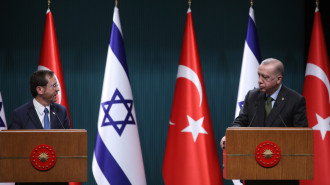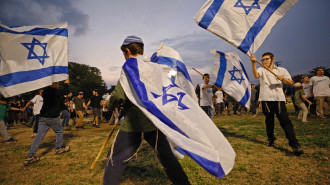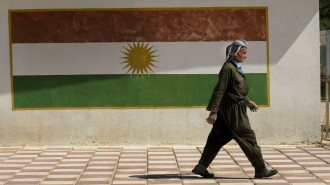
The Iraq Report: Mosul's long road to recovery after liberation from the Islamic State

Mosul, located 465 km northwest of Baghdad on the west bank of the Tigris River, is the main city of Nineveh Governorate. It sits directly across from the ancient city of Nineveh and Jonah's Tomb, also known as Al-Nabi Yunus Mosque.
Strategically positioned, throughout history Mosul has connected China, the Mediterranean, Anatolia, and Mesopotamia as a crucial hub for trade and learning. Its Arabic name, meaning "the linking point," reflects this connectivity.
By the 6th century, Mosul had become a significant centre for the Assyrian Church of the East, and following the fall of Nineveh in 612 BC, the city rose to prominence under various empires, including the Median, Achaemenid, Seleucid, Sassanian, and the Rashidun Caliphate.
Like other cities across Iraq, Mosul suffered tremendously after the 2003 US invasion and its subsequent political chaos, which led to increased sectarian divisions and instability.
This weakening of the country allowed the Islamic State (IS) to rapidly seize Mosul on 10 June 2014, with Abu Bakr al-Baghdadi soon making his first public appearance in the city's iconic Great Mosque of Al-Nuri and declaring a caliphate ruling over an 'Islamic State'.
The next three years were marked by devastation, with minorities being hit hardest and still suffering from the scars of IS's rule.
The New Arab (TNA) reflects on IS’s legacy in Mosul, focusing on their defeat in 2017 and the subsequent liberation of the city on 21 July 2017, which resulted in destruction on a massive scale.
TNA hears from those who experienced the city's suffering first-hand - whether by documenting the atrocities, escaping them, or participating in its reconstruction efforts after the liberation.
Mosul's recovery after liberation
Following the liberation, Mosul was highlighted in the press for its extensive recovery efforts. In February 2018, UNESCO launched the flagship initiative Revive the Spirit of Mosul to support the recovery of the city.
Mosul lost much of its history and heritage, including the iconic Al-Nuri Mosque and Al-Hadba Minaret, dozens of mosques and shrines, historical sites, and the Mosul Museum.
Despite the devastation, life began returning to Mosul immediately after the city was liberated. Residents, especially those whose homes were undamaged or only partially damaged, started moving back right away.
Volunteer initiatives played a crucial role, starting with debris removal campaigns, cleaning, repairs, and distributing food and medical aid.
One notable initiative was the Revolution of the Donkey Carts, a debris removal campaign in the old city co-founded by Ayoob Thanoon, Ambassador of the Revive The Spirit Of Mosul initiative and Founder and CEO of Mosul Heritage Foundation, along with a group of young volunteers.
Over three months, Ayoob and his team cleared 21,000 cubic meters of debris, with financial support from the people of Mosul.
Additional reconstruction efforts included collaborating with international organisations to expand UNESCO's activities, including organising the first heritage festival at the Royal Hall in the Mosul Museum.
The success of the event led to the establishment of the Mosul Heritage Foundation in a heritage house near the Tigris River and the Mosul Citadel.
The house became a cultural centre and museum with artefacts donated by Mosul families. It also houses the first virtual heritage museum, created in partnership with QAF Lab.
Currently, new funding from the European Union (EU) is designated for the restoration of two sites: Al-Baroud Khana and Hammam Al-Qalaa, as well as a capacity-building project, with the support set to last for two years.
Additionally, the EU, together with backing from the UAE, is funding the complete reconstruction of Al-Nuri Mosque and Al-Tahera Church.
Questioning the actions of the other side
After Mosul was liberated, the press focused not only on the city's recovery but also on the level of force used by both IS and the forces that liberated the city.
While the fall of Mosul marked the end of IS’s control in Iraq, the actions of the Iraqi Security Forces (ISF) and the US-led coalition (CJTF-OIR), which operated under the "through, with, and by" concept, were questioned.
Rasha Al Aqeedi, a Mosul-born analyst who lectures at the Foreign Service Institute, told TNA that a key concern was the participation of the Popular Mobilisation Forces (PMF) in the operation due to their documented abuses in Fallujah and Salahuddin.
There was also concern over the intensity of the airstrikes carried out by the coalition. IS caused significant destruction with fires, Vehicle Borne Improvised Explosive Devices (VBIEDs), and other explosives, fighting from within civilian areas, which led to buildings being destroyed by Iraqi forces trying to drive out the group.
This approach not only caused widespread damage but also resulted in higher casualties among Iraqi Security Forces (ISF), who had to clear buildings room by room.
Additionally, Iraqi forces, particularly the Iraqi Federal Police and Emergency Response Division (ERD), used indiscriminate fire, leading to severe damage.
The Department of Defence reported that 306 civilians were inadvertently killed in coalition strikes during the Mosul operation in 2017. Independent groups, however, estimate that the actual number of civilian casualties could be up to five times higher.
Omar Mohammed, widely known as Mosul Eye, documented IS atrocities and exposed them to the world. At great personal risk, he roamed the streets of Mosul, witnessing and recording events first-hand.
He discussed the level of force used by Iraqi forces with TNA and shared insights from an interview he conducted with former Prime Minister Haidar Al Abadi on 16 February 2021.
Mohammed revealed that Abadi mentioned that some politicians and parliament members had advocated bombing civilian areas suspected of supporting IS.
Reflecting on the level of force used, Mohammed highlighted that while the liberation of Mosul was necessary, the battle involved excessive violence against both IS and civilians.
He emphasised that although the top command may not have intended to harm civilians, operational-level forces often lacked the care needed to protect non-combatants.
Mohammed also noted that many areas could have been spared from bombing, and numerous civilian casualties could have been avoided.
Is Mosul losing focus in Iraqi politics today?
Most of those interviewed by TNA agree that Mosul currently lacks the necessary support to fully recover.
“The central government has not done enough for Mosul. The city's immense losses have never truly been addressed. Not just the agony inflicted by IS, but also the ill-advised military campaign to liberate the city, which left nearly half of it completely destroyed,” Al Aqeedi said.
Ayoob Thanoon shares this scepticism, expressing doubt about the Iraqi government’s commitment to Mosul. He points out that ongoing political and economic instability hampers reconstruction efforts.
“Political instability, a major factor in Mosul's previous fall, continues to pose risks. Economically, many people remain unemployed, and there are significant delays in compensating those affected by war and terrorism. Corruption in political, administrative, and financial institutions further complicates recovery. While there is hope and ambition, uncertainty about the future persists,” Thanoon commented.
Omar Mohammed asserts that Mosul is not a current priority for Iraqi politicians, emphasising the government's insufficient involvement in the city's reconstruction. He believes swift action is essential to restore Mosul's core values and historical significance.
He also expressed concerns about the renewed fear among Mosul's residents due to the control exerted by Iran-backed militias, which he says contribute to instability.
“For meaningful recovery, the Iraqi government must establish a secure environment free from militia influence to ensure the safety and stability of Mosul's inhabitants,” Mohammed remarked.
Moving forward: A positive future ahead?
With a lack of support from the Iraqi government, the future of Mosul remains uncertain.
In addition to the efforts of the international community, Al Aqeedi noted that much of the reconstruction has been self-funded through contributions from Mosul's noble families, creating some hopes for the city's future.
“I do view that as positive because it has strengthened the city's identity and culture,” she says.
Mohammed, however, has a different view. “I believe that Mosul currently is no more than an urban centre that has probably entirely lost its core historical value and place in history," he said.
“While it can become a human settlement where people can live and continue their lives, I am not optimistic that Mosul can once again be a hub of culture and intellectual production," he added.
"The city is living in deep trauma.”
The Iraq Report is a regular feature at The New Arab.
Click here to see the full archive.








 Follow the Middle East's top stories in English at The New Arab on Google News
Follow the Middle East's top stories in English at The New Arab on Google News


